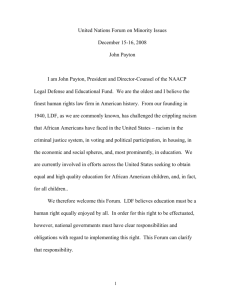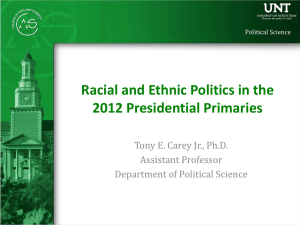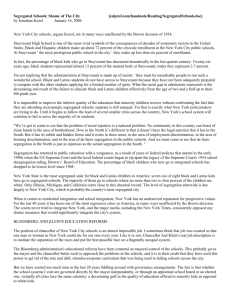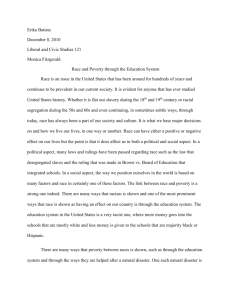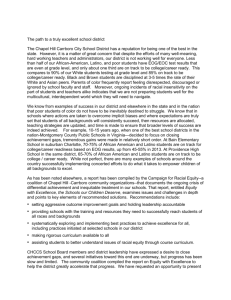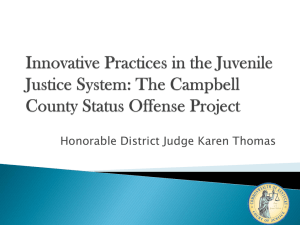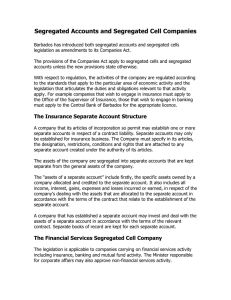Facts about school segregation today
advertisement
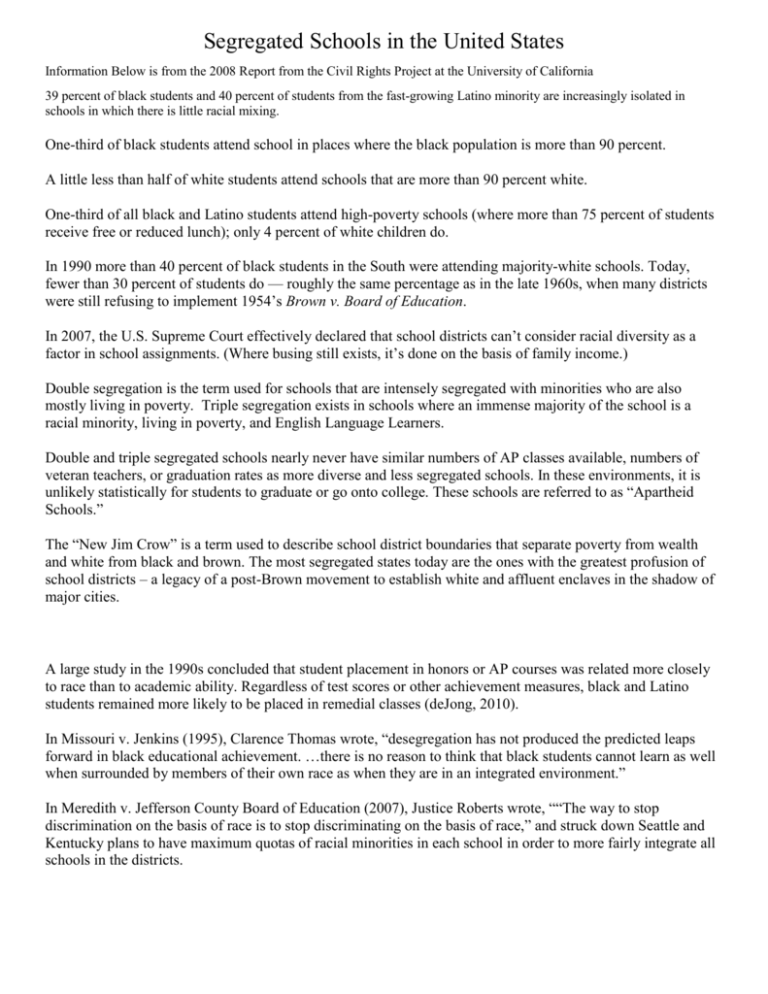
Segregated Schools in the United States Information Below is from the 2008 Report from the Civil Rights Project at the University of California 39 percent of black students and 40 percent of students from the fast-growing Latino minority are increasingly isolated in schools in which there is little racial mixing. One-third of black students attend school in places where the black population is more than 90 percent. A little less than half of white students attend schools that are more than 90 percent white. One-third of all black and Latino students attend high-poverty schools (where more than 75 percent of students receive free or reduced lunch); only 4 percent of white children do. In 1990 more than 40 percent of black students in the South were attending majority-white schools. Today, fewer than 30 percent of students do — roughly the same percentage as in the late 1960s, when many districts were still refusing to implement 1954’s Brown v. Board of Education. In 2007, the U.S. Supreme Court effectively declared that school districts can’t consider racial diversity as a factor in school assignments. (Where busing still exists, it’s done on the basis of family income.) Double segregation is the term used for schools that are intensely segregated with minorities who are also mostly living in poverty. Triple segregation exists in schools where an immense majority of the school is a racial minority, living in poverty, and English Language Learners. Double and triple segregated schools nearly never have similar numbers of AP classes available, numbers of veteran teachers, or graduation rates as more diverse and less segregated schools. In these environments, it is unlikely statistically for students to graduate or go onto college. These schools are referred to as “Apartheid Schools.” The “New Jim Crow” is a term used to describe school district boundaries that separate poverty from wealth and white from black and brown. The most segregated states today are the ones with the greatest profusion of school districts – a legacy of a post-Brown movement to establish white and affluent enclaves in the shadow of major cities. A large study in the 1990s concluded that student placement in honors or AP courses was related more closely to race than to academic ability. Regardless of test scores or other achievement measures, black and Latino students remained more likely to be placed in remedial classes (deJong, 2010). In Missouri v. Jenkins (1995), Clarence Thomas wrote, “desegregation has not produced the predicted leaps forward in black educational achievement. …there is no reason to think that black students cannot learn as well when surrounded by members of their own race as when they are in an integrated environment.” In Meredith v. Jefferson County Board of Education (2007), Justice Roberts wrote, ““The way to stop discrimination on the basis of race is to stop discriminating on the basis of race,” and struck down Seattle and Kentucky plans to have maximum quotas of racial minorities in each school in order to more fairly integrate all schools in the districts. /wEPDwUKLTM5N /wEWBgLKlbjECAK 2009-2010 2009-2010 Procter R. Hug High School Reno High School Student Information Enrollment Total Students % American Indian Enrollment 1,387 Total Students 1.6 % American Indian 1,750 1.7 % Asian 10.4 % Asian 5.8 % Black 8.1 % Black 1.7 % Hispanic 60.7 % Hispanic 13.4 % White 19.3 % White 77.4 % Pacific Islander N/A % Pacific Islander N/A % Multi-Race N/A % Multi-Race N/A Ratios and Rates Ratios and Rates Avg. Daily Attendance 94.1 Avg. Daily Attendance 94.6 Graduation Rate 61.0 Graduation Rate 87.2 Dropout Rate Transiency Rate Discipline Events Violence Related Weapons Related 2.7 Dropout Rate 25.9 Transiency Rate 1.7 14.8 Discipline Events 73 Violence Related 7 Weapons Related 30 3 Substance Related 16 Substance Related 25 Habitual Offenders 0 Habitual Offenders 0 Habitual Truancy 115 Habitual Truancy 51


